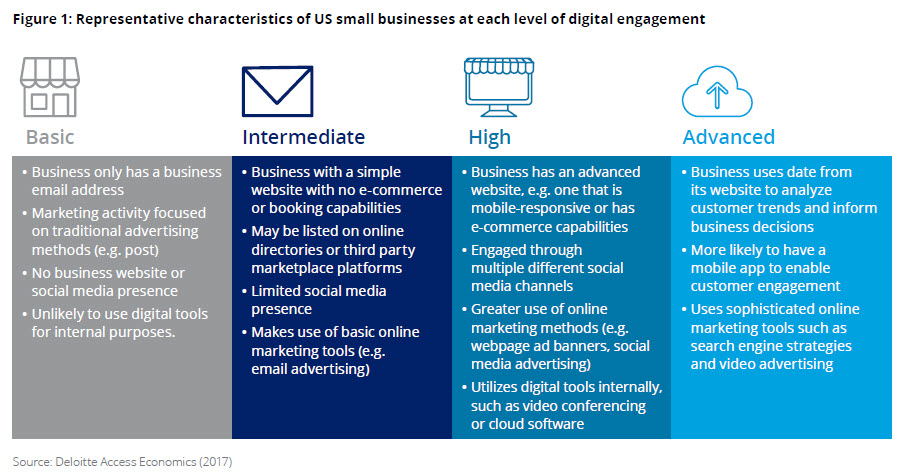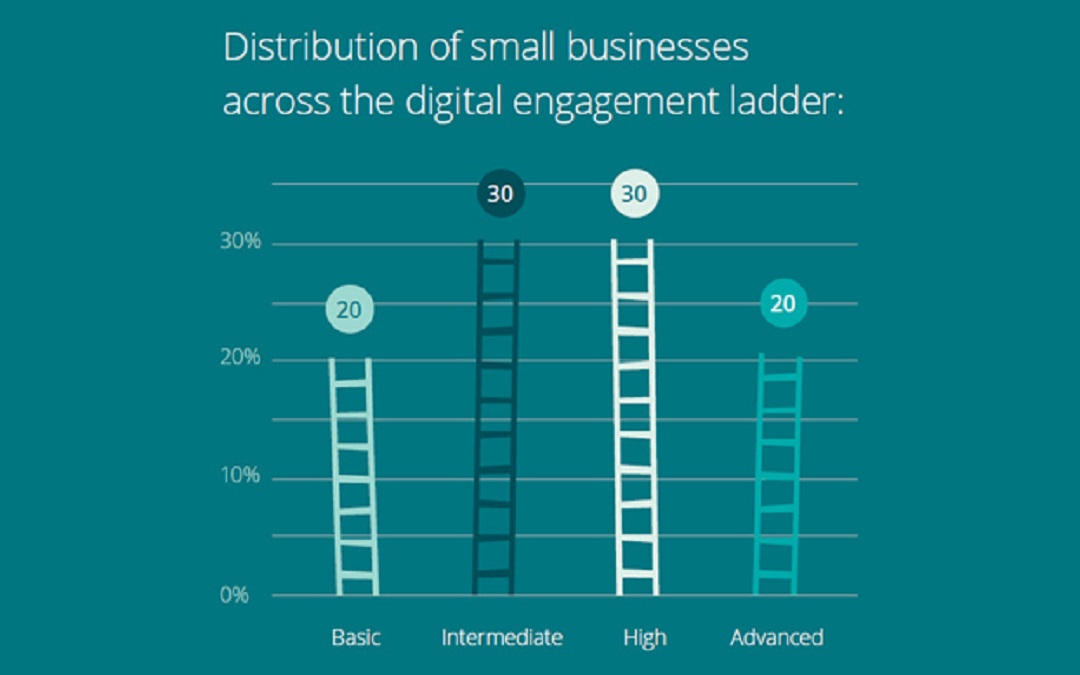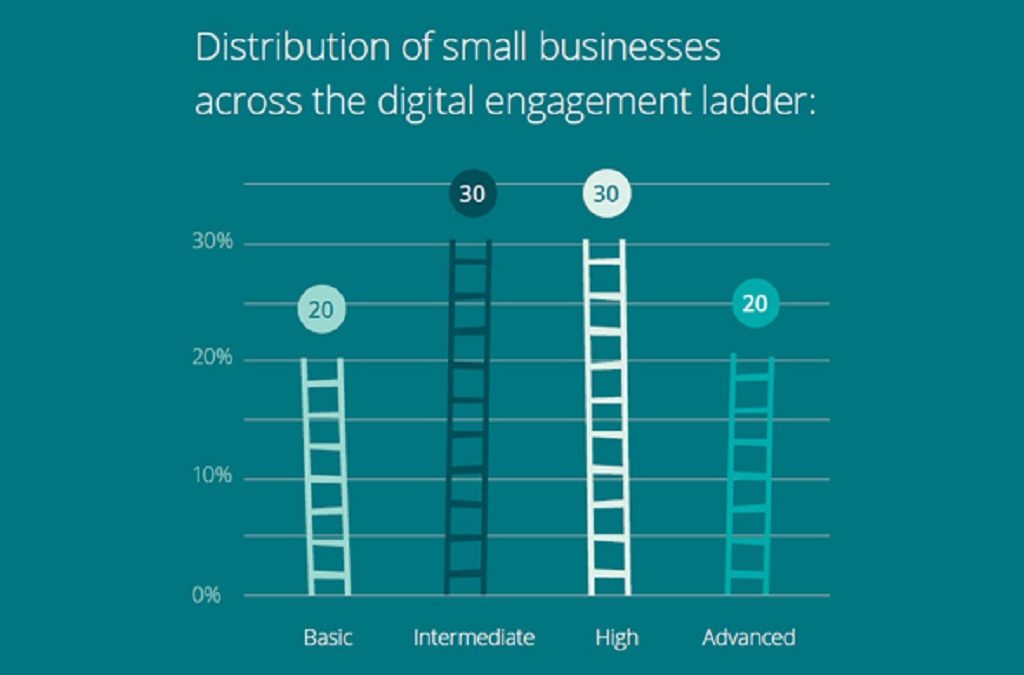From not having a website to using digital tools that analyze purchase behaviors, small and medium-sized businesses (SMBs) span the entire spectrum of digital adoption. However, in today’s market, effective usage of digital technologies is directly related to revenue growth. SMBs not engaging with tech are at risk of losing to those that are.
A new Deloitte study (commissioned by Google) found that the more digitally sophisticated an SMB is, the greater their revenue growth rate is. Bucketed into four levels of sophistication (basic, intermediate, high, advanced), the study found that revenue growth rate for the last 12 months for “advanced” SMBs was nearly four times that of “basic” SMBs.
Aggregated figures for revenue growth in the past 12 months were: 12% basic, 21% intermediate, 31% high and 45% advanced. The greater the SMB’s digital sophistication level, the study found, the higher the revenue growth rate.
Here were some additional findings for digitally advanced small businesses:
- Are able to reach a more diversified customer base, including a wider range of export markets, which means they can grow faster than small businesses with a more limited pool of potential customers.
- Have greater capabilities for product innovation, which enables these small businesses to generate new streams of revenue by offering new products and services to the market.
- Experience more customer activity throughout the sales funnel, from initial interest, to purchase inquiries, to actual customers.
The distribution of SMBs across the various sophistication levels was fairly even, with 20% falling under basic, 30% intermediate, 30% high and 20% advanced. The following are some key characteristics of each of the levels:

Traditionally SMB providers have segmented the SMB market by years in business, headcount, revenues or industry. However the study’s view of the space offers providers, particularly digital marketers, a new way to carve up the space and target SMBs.
Running parallel to this digital adoption issue is a widening marketing spending gap among SMBs. According to a recent survey, roughly a third (33%) of SMBs expect to spend $1,000 or less on marketing this year while 30% will spend $25,000 or more.
The study does suggest something of a chicken and egg scenario. Is digital investment a function of a more sophisticated and growth-oriented approach or does digital deliver growth independent of the underlying attitudes of the business? According to the study, “the primary causal direction of the relationship is that small businesses are indeed reaping significant growth dividends as a result of increased use of digital tools.”
It isn’t a major surprise that digital adoption is helping drive revenue growth for SMBs given the rise of the digital consumer. But the study does help quantify and segment the market based on digital sophistication among SMBs, offering a new way for providers to think about and approach SMBs.




